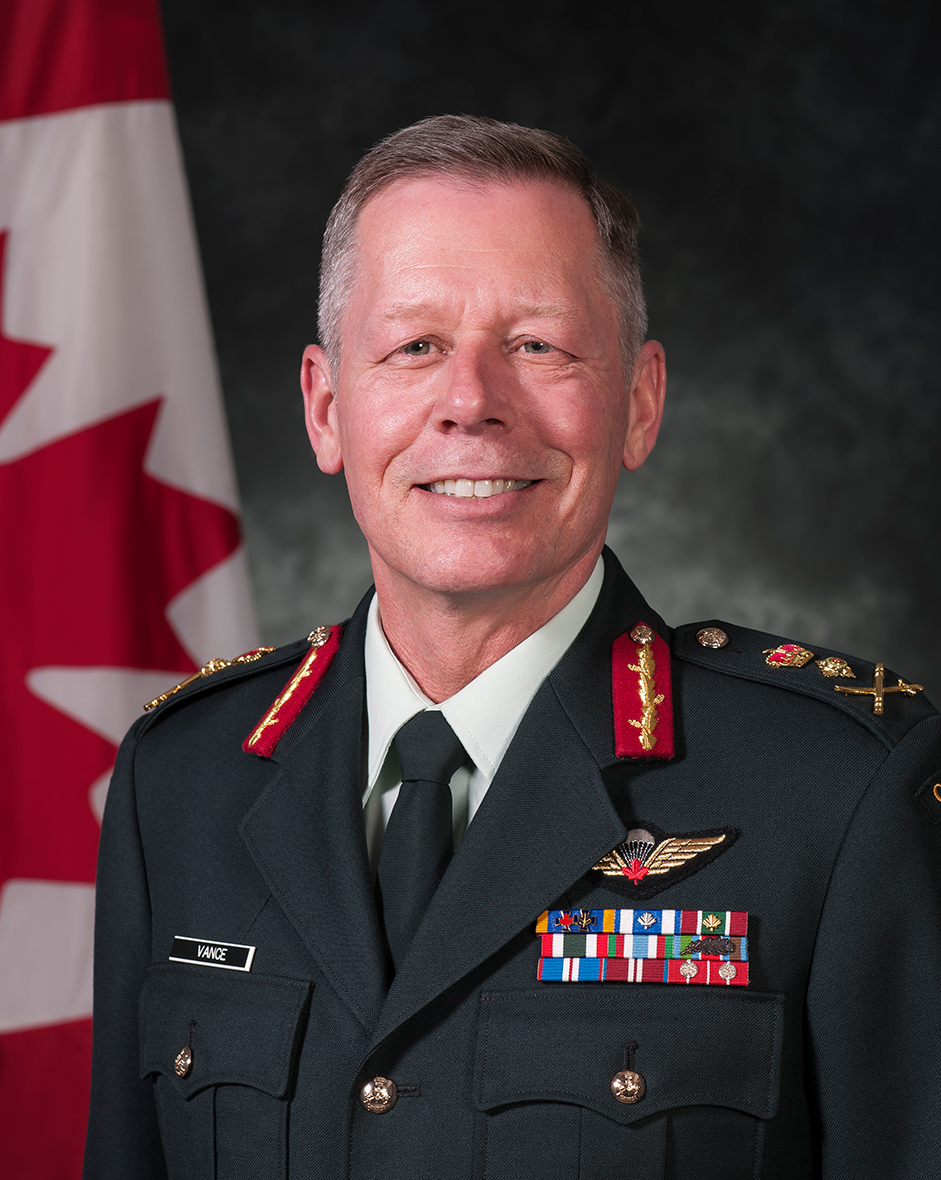The media is unfair to the military, according to the Chief of Defence Staff. During a speech to the Greater Vancouver Board of Trade last week General Jonathan Vance slammed “very toxic narratives” in reporting on the Canadian Forces.
“If you’re paying attention to the news today, there are some very toxic narratives about the armed forces,” Vance said. “The narrative that seems to prevail right now is if you join the armed forces, you are going to be sexually assaulted, raped or you’re going to suffer from PTSD at some point and may commit suicide.”
Reporting the truth is toxic?
With the largest PR machine in the country, the CF aggressively always protects its image and promotes its worldview. As I detail in my latest book A Propaganda System: How Canada’s Government, Corporations, Media and Academia Sell War and Exploitation, the military runs a slew of journalistic, academic and cultural initiatives. The military produces dozens of publications and its numerous websites make articles, speeches, reports and other types of information easily accessible to the public. The Canadian Forces also employs YouTube, Facebook, Twitter and other social media platforms to promote its positions and recruit new members.
In 2010-11 the Canadian Forces admitted to spending $354 million on public relations and related military commemorations. Six hundred and sixty-one staff members worked on this effort. According to another 2011 report, the Department of National Defence’s Public Affairs department had 286 staff. Public Affairs Officers’ write press releases, organize press conferences, monitor the news, brief journalists, befriend reporters and editors, or perform various other media-related activities. A large proportion of the news stories about the military are based on CF statements and events.
But that clearly isn’t good enough for the Chief of Defence Staff. After taking charge of the CF, Vance immediately sought to reinforce their influence over news coverage of military affairs. In fall 2015, Ottawa Citizen military reporter David Pugliese revealed Canada’s top soldier’’ call for the “weaponization of public affairs.” Vance proposed a plan to induce positive coverage and deter critical reporting. Journalists producing unflattering stories about the military were to be the target of phone calls to their boss, letters to the editor and other “flack” designed to undercut their credibility in the eyes of readers and their employers.
While the “weaponization of public affairs” slogan was novel, Pugliese pointed out in a blog that “Vance isn’t the first to attempt to bring pesky journalists to heel. It was quite common for officials working for then Defence Minister Peter MacKay to phone editors of various publications to complain about reporters.”
The CF didn’t stop at complaining to journalists’ bosses. The top brass repeatedly asked the military’s National Investigative Service (NIS) to investigate reporters’ sources. In 2011 NIS investigated prominent CTV journalist Robert Fife after he uncovered documents about Chief of Defence Staff Walt Natynczyk spending over $1 million in public funds flying to hockey games and a Caribbean vacation. Pugliese described this as a blatant “intimidation tactic by the NIS against a journalist who was clearly not playing military cheerleader.”
In a similar incident, NIS spent more than a month investigating how Pugliese obtained information about a major Pacific Ocean military exercise in spring 2012. While the Ottawa Citizen defence reporter said the information came from a U.S. Navy release, which the NSI investigation ultimately supported, DND officials believed Pugliese was tipped off by a friendly Public Affairs Officer. Esprit du Corp editor Scott Taylor pointed out that the investigation had nothing to do with operational security. “No classified information was divulged. No operational security jeopardized. No Canadian sailors’ lives were put in peril as a result of Pugliese’s rather innocuous story, but [defence minister Peter] MacKay’s timetable for release [of the information] had not been strictly adhered to.”
According to Taylor, NIS was employed on at least four occasions to investigate the source of information for stories. Yet in none of these instances was classified material reported.
The military is sensitive about embarrassing leaks. A July 2014 Embassy story titled “DND points to ‘challenges’ with former soldiers talking to media” reported on ministerial briefing notes concerning the problem of “leaks.” A year earlier the CF required soldiers wounded in Afghanistan to sign a form saying they wouldn’t criticize senior officers on Facebook or other social media. Former soldiers are a concern since active CF members are restricted in what they can say publicly or post online.
An extremely centralized organization, the people at the top of Canadian Forces want to control everyone and everything.
To paraphrase a widely circulated quote: when you’re accustomed to shaping coverage, a bit of criticism can feel like a “toxic” media environment.
Like this article? Please chip in to keep stories like these coming.



